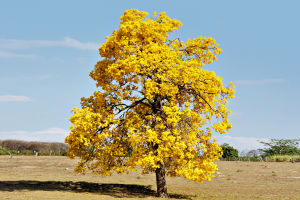Carnivorous plants are some of the most fascinating and unusual organisms on Earth. These plants have evolved to thrive in nutrient-poor environments, using ingenious methods to capture and digest prey.
Today, we dive into the world of these meat-eaters and explore their creative traps and sticky strategies.
What Are Carnivorous Plants?
Carnivorous plants are unique in that they can attract, capture, and digest animals to gain essential nutrients, which are often lacking in their environments. While most carnivorous plants consume insects, larger species can feast on small reptiles or mammals. Some aquatic varieties even devour tiny fish and crustaceans.
There are roughly 630 known species of carnivorous plants, and this adaptation has evolved multiple times across different plant families. Despite their diet, these plants still rely on photosynthesis and have root systems like other plants. Being carnivorous simply provides an extra boost in their resource acquisition.
Where Do These Plants Live?
Carnivorous plants are typically found in wet, low-nutrient areas such as bogs, swamps, and freshwater bodies. They can be found all around the world, except Antarctica. Some species, like sundews and butterworts, are native to the UK, while others, like the giant pitcher plants of Borneo, are found in remote rainforests.
For example, the Attenborough's pitcher plant, located in the Philippines, is a towering giant that can trap and digest small rodents. It grows up to 1.5 meters in height, making it one of the largest of its kind. On the other hand, the common butterwort uses sticky mucilage to trap insects on its leaves.
How Do Carnivorous Plants Attract Prey?
To lure their prey, carnivorous plants employ a range of strategies. Many species produce sweet-smelling nectar and vibrant colors that mimic flowers, while others blend seamlessly into their surroundings to trap unsuspecting victims. Some, like the parrot pitcher plants, have colorful, trumpet-shaped leaves that attract their prey, while their deadly digestive system waits inside.
In some cases, plants like sundews have sticky, dewdrop-like droplets that immobilize insects, giving them no chance of escape.
How Do These Plants Digest Their Food?
Carnivorous plants use digestive enzymes to break down their prey into a nutritious liquid. Some even rely on symbiotic bacteria to aid in digestion. These enzymes transform the animal matter into essential nutrients like nitrogen and phosphorus, which are otherwise scarce in the plants' environment.
The Different Types of Traps
There are five main types of traps used by carnivorous plants: pitfall, adhesive, snap, snare, and suction traps.
•Pitfall traps are seen in pitcher plants, where a tube-like structure entices prey to fall inside, where they are drowned in digestive fluids.
•Adhesive traps, like those of sundews, use sticky droplets to capture small insects, slowly suffocating them.
•Snap traps, like the famous Venus flytrap, snap shut when prey triggers the sensitive hairs inside.
•Snare traps use chemical lures to attract single-celled organisms into tubular projections, leading them into digestive bladders.
•Suction traps, found in aquatic bladderworts, use a vacuum-like mechanism to trap small creatures that come too close.
Unusual Partnerships in the Plant World
Some carnivorous plants engage in remarkable mutualistic relationships. For instance, the bat pitcher plant provides a roost for bats. In return, the bats deposit nutrient-rich guano into the plant's traps, enriching it with valuable nutrients.
Similarly, the Low's pitcher plant attracts tree shrews, which feed on its nectar and contribute feces, enhancing the plant's nutrient supply.
Carnivorous plants showcase the incredible versatility of nature, adapting to harsh conditions with remarkable hunting methods. By attracting, trapping, and digesting prey, these plants ensure their survival and continue to inspire awe in scientists and nature enthusiasts alike.


